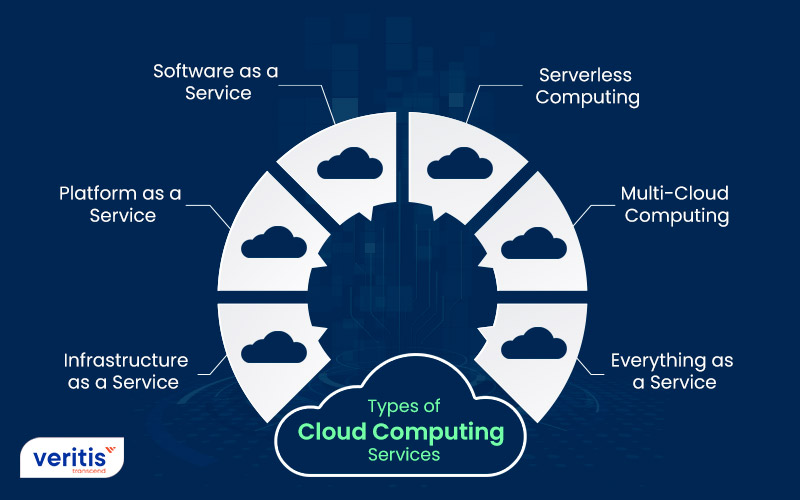Discover the Power of LinkDaddy Cloud Services: Authorities Press Release Insights
Discover the Power of LinkDaddy Cloud Services: Authorities Press Release Insights
Blog Article
Achieve Seamless Scalability With Cloud Services
In the ever-evolving landscape of cloud solutions, attaining smooth scalability stands as a cornerstone for contemporary services seeking to remain versatile and competitive. The capacity to effortlessly broaden or acquire sources in reaction to transforming needs is an essential advantage in today's hectic digital setting. By grasping the art of scalable cloud solutions, organizations can not only optimize efficiency and simplify procedures yet additionally lead the means for future development and innovation. The pursuit for smooth scalability with cloud services introduces a world of opportunities for those ready to welcome the transformative power of vibrant source management.
Benefits of Cloud Scalability
Cloud scalability offers companies the adaptability to dynamically readjust sources based on demand, making certain ideal efficiency and cost effectiveness. In addition, cloud scalability advertises technology and trial and error by allowing services to easily examine brand-new concepts and scale them as needed. Inevitably, the advantages of cloud scalability extend past expense savings to incorporate better efficiency, dexterity, and advancement.
Key Features for Scaling
Reliable scaling in cloud services depends on vital attributes that make it possible for companies to change resources dynamically based on need. One important function for scaling is elasticity, enabling resources to scale up or down in feedback to fluctuating workloads. This guarantees that companies can meet performance demands without over-provisioning sources. Another essential attribute is scalability, enabling systems to manage increased workload by adding resources seamlessly. This attribute is important for fitting development without jeopardizing efficiency. Additionally, automation plays a vital duty in scaling by automating the provisioning and de-provisioning of sources based on predefined plans. Automation reduces human intervention, improves performance, and guarantees quick feedback to changing demands. Surveillance and analytics tools are likewise important for scaling, offering insights into source application, efficiency metrics, and possible bottlenecks. These devices make it possible for organizations to optimize and make informed choices source allotment for reliable scaling. On the whole, these vital attributes collectively encourage companies to attain seamless scalability in cloud services.
Executing Auto-Scaling Approaches
To successfully enhance source allotment and adjust to varying workloads, companies should purposefully implement auto-scaling techniques in their cloud services infrastructure. Auto-scaling enables systems to immediately readjust the variety of calculate resources based upon real-time need. There are different auto-scaling techniques that companies can utilize, such as anticipating scaling, which makes use of historical information to forecast future resource demands, and reactive scaling, which reacts to current workload changes.

Finest Practices for Scalability
For organizations intending to enhance their scalability in cloud solutions, carrying out best techniques is critical for optimal performance and resource monitoring. One secret finest technique is making applications with a microservices style. This strategy breaks down applications into smaller sized, independent services that can be deployed, updated, and scaled individually, enabling for greater versatility and scalability.
An additional essential technique is using containerization technology, such as Docker or Kubernetes. Containers make it possible for the product packaging of applications and their dependencies into separated systems, making it simpler to scale elements individually and release them regularly throughout different settings.
Furthermore, implementing automated release and infrastructure as code (IaC) can simplify scalability efforts (linkdaddy cloud services). Automation devices like Terraform or Ansible aid in provisioning and taking care of resources linkdaddy cloud services effectively, decreasing manual errors and making it possible for quick scalability
Moreover, monitoring performance metrics, establishing notifies, and performing routine capability preparation are necessary practices to guarantee aggressive scalability administration. By sticking to these ideal techniques, companies can attain smooth scalability in their cloud solutions while maximizing performance and source use.
Tracking Efficiency Metrics
When assessing the efficiency of cloud services scalability, carefully checking performance metrics is necessary for guaranteeing ideal performance and source appropriation. By continuously tracking essential performance signs (KPIs) such as reaction times, resource, throughput, and latency application, organizations can get valuable understandings into the health and effectiveness of their cloud framework. Checking efficiency metrics enables for the early discovery of potential bottlenecks or issues that can influence scalability, allowing aggressive steps to be taken to address them prior to they rise.

Verdict
Finally, attaining smooth scalability with cloud services is necessary for organizations to optimize efficiency, enhance technology, and maintain high performance levels throughout peak times. By leveraging the advantages of cloud scalability, implementing auto-scaling approaches, making use of crucial attributes such as flexibility and automation, and complying with finest methods like application layout and performance monitoring, companies can effectively scale their systems while making the most of source usage and performance.
The quest for smooth scalability with cloud services reveals a world of possibilities for those ready to accept the transformative power of vibrant resource administration.
Cloud scalability offers organizations the versatility to dynamically change sources based on demand, making sure optimum efficiency and cost effectiveness. Another crucial feature is scalability, making it possible for systems to manage enhanced workload by including resources flawlessly.For companies aiming to boost their scalability in cloud services, carrying out ideal practices is critical for optimal performance and source management.When examining the effectiveness of cloud services scalability, carefully keeping an eye on efficiency metrics is vital for making sure optimal capability and source allotment.
Report this page